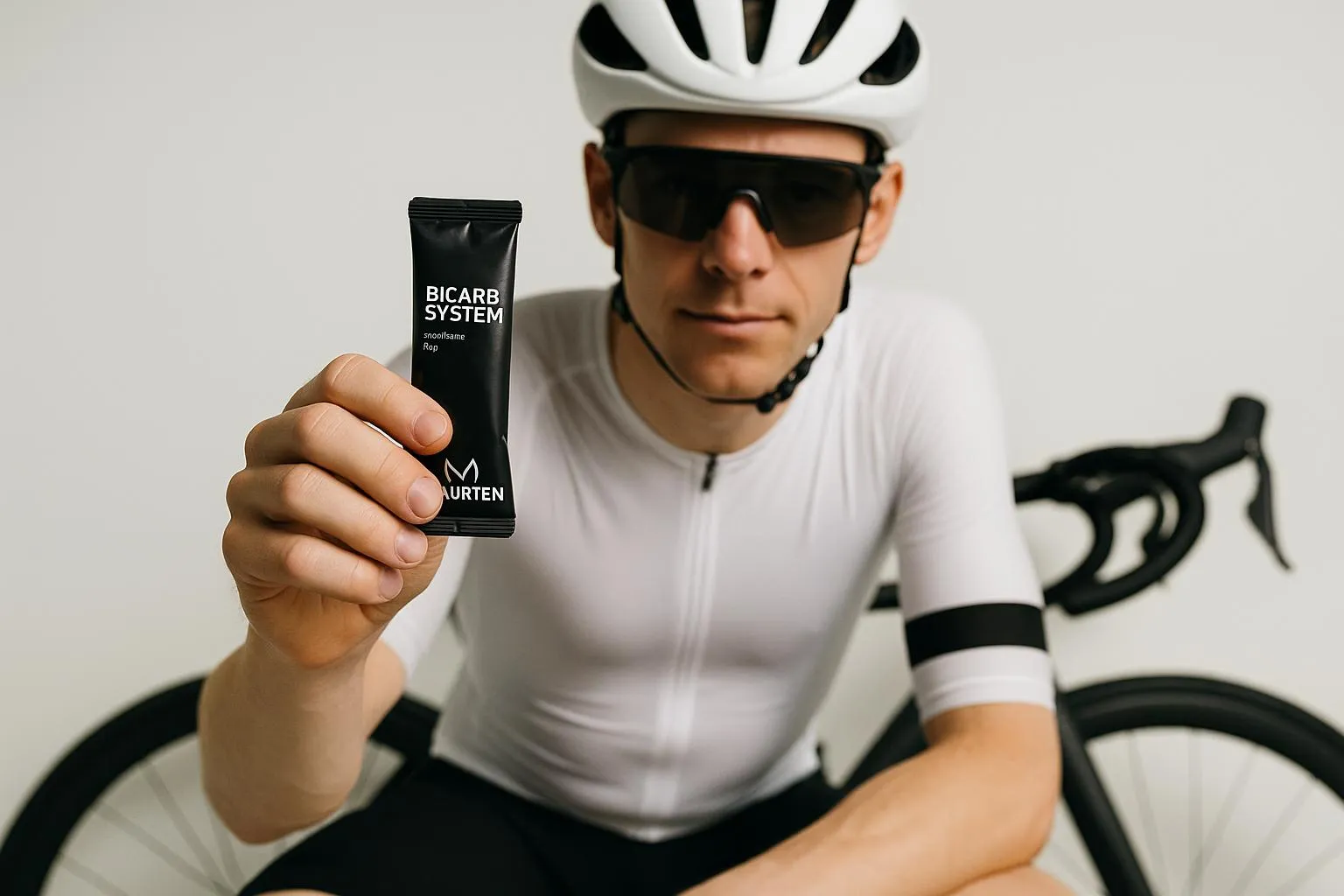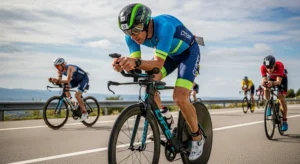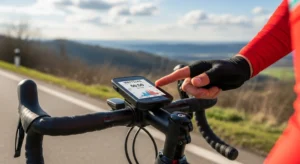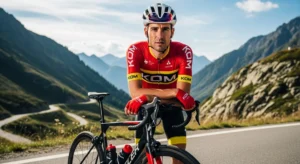The quest for speed is a relentless pursuit in the world of cycling. Every year, the brightest minds in the sport gather at the Science & Cycling Conference to share their latest discoveries, and this year’s event in Lille, France, was no exception. From groundbreaking nutritional strategies to surprising revelations about equipment, the conference provided a fascinating glimpse into the future of cycling performance. Here are five of the most exciting breakthroughs that are set to change the way we ride and race in 2025 and beyond.
1. The Bicarb Boost: A New Era of Performance Enhancement
Sodium bicarbonate has been a known performance enhancer for years, but its use has been limited by its tendency to cause gastric distress. Now, thanks to a new hydrogel formulation from Maurten, that’s all about to change. The Maurten Bicarb System is reportedly much gentler on the stomach, allowing athletes to take advantage of its 2-3% performance gains without the nasty side effects. But that’s not all. New research presented at the conference revealed that bicarbonate also lowers the perception of effort by acting on acid-sensing pain receptors. This means you can push harder for longer, without feeling like you’re about to explode. It’s a game-changer for everything from short time trials to long and grueling road races.
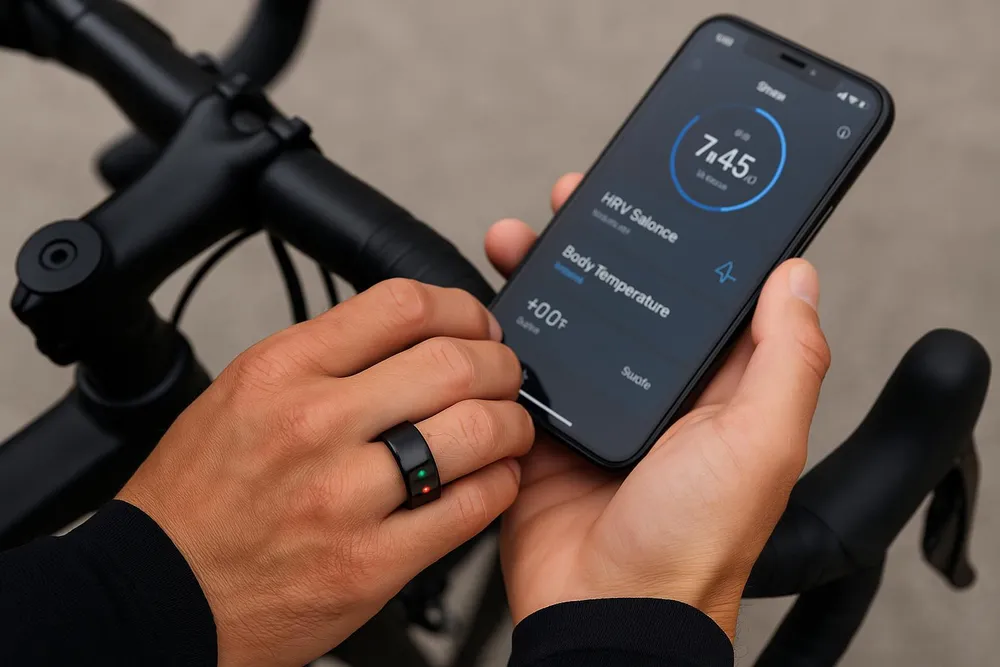
2. The Smart Ring Revolution: Hacking Your Health for Peak Performance
Smart rings like the Oura Ring are becoming increasingly popular, and for good reason. These tiny devices can track a wealth of health data, from your sleep patterns to your heart rate variability. And now, professional cycling teams like Israel-Premier Tech are using them to predict and prevent illness. By monitoring changes in body temperature and blood oxygen saturation, they can identify the early signs of sickness and take steps to mitigate its impact. While the sleep tracking accuracy of these devices is still a work in progress, their ability to provide an early warning system for illness is a huge step forward in the quest for consistent, high-level performance.
3. The Knee Pain Puzzle: Solving the Mystery of Prepatellar Friction Syndrome (PPFS)
Knee pain is the bane of many a cyclist’s existence, and it’s often misdiagnosed. But thanks to the work of researchers like Soudal-QuickStep physiotherapist Manu Wemel, we now have a better understanding of a specific type of knee pain called prepatellar friction syndrome (PPFS). This condition, which has affected top pros like Wout van Aert, is caused by friction between the soft tissue layers at the front of the knee. It can be triggered by a crash, a poor bike fit, or even overly tight bib shorts. The good news is that with early recognition and a proper treatment plan, you can avoid long spells off the bike and get back to riding pain-free.
4. The Crank Length Conundrum: Is Shorter Really Better?
The debate over crank length has been raging for years, with many top riders, including Jonas Vingegaard and Tadej Pogačar, opting for shorter cranks in search of an aerodynamic advantage. But is there really any performance benefit to be gained from going shorter? According to a new study from the University of Utah, the answer is a resounding “not really.” The study, which tested a wide range of crank lengths from 120mm to 220mm, found that crank length had a “relatively small impact” on both maximum power output and endurance. So, while shorter cranks might offer some benefits in terms of injury prevention and hip mobility, they are not the magic bullet that many had hoped for.

5. The Periodized Plate: A Smarter Way to Manage Your Weight
Weight management is a critical component of cycling performance, but it’s also a delicate balancing act. Cut too many calories, and you risk under-fueling and compromising your training. That’s where periodized nutrition comes in. By strategically manipulating your carbohydrate intake to match the demands of your training, you can safely and effectively lose weight without sacrificing performance. The Israel-Premier Tech team used this approach with great success with their rider Derek Gee, who shed 5.5kg over 12 months while increasing his 20-minute power output by nearly 30 watts. It’s a smart and sustainable approach to weight management that can help you reach your peak performance potential.
For more insights on cycling and technology, explore our comprehensive guides on Cycling Nutrition Technology: The Future of Fueling for Peak Performance in 2025, and Smart Helmets and AI Bike Fitting: The Future of Cycling Safety and Performance in 2025.
Explore additional resources on BikeRadar: 5 discoveries set to make bike racing faster, from bicarb supplements to extreme cranks, Maurten Bicarb System, Oura Ring, The Science of Crank Length, and Relative Energy Deficiency in Sport (RED-S).
